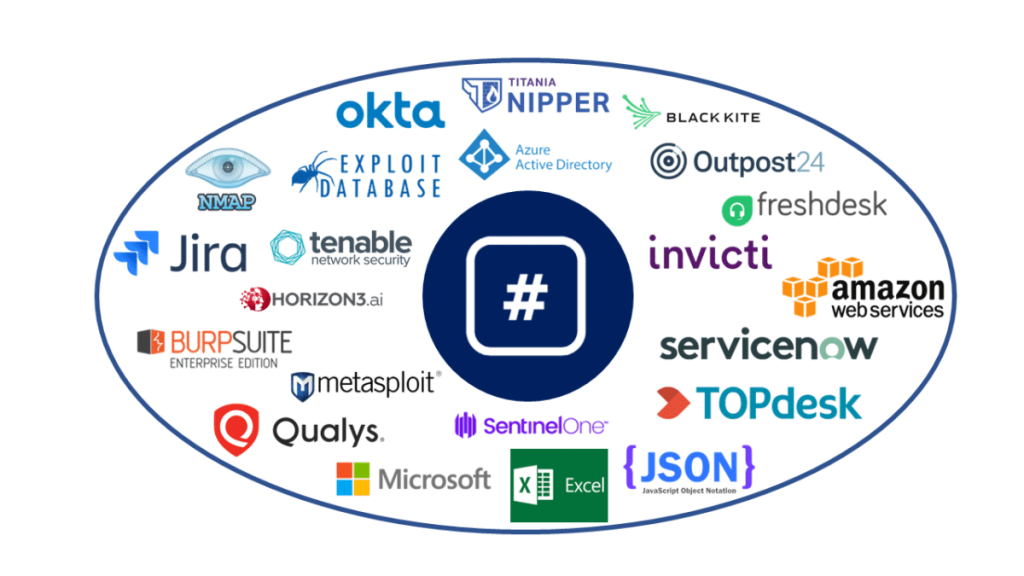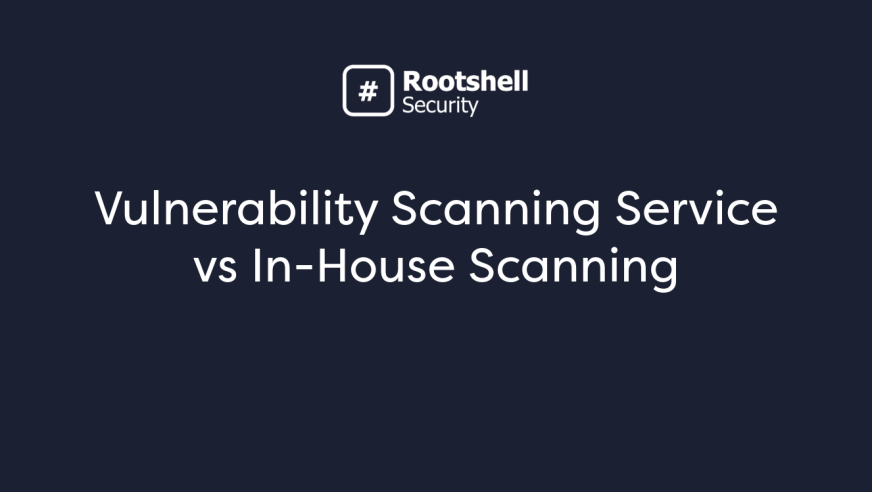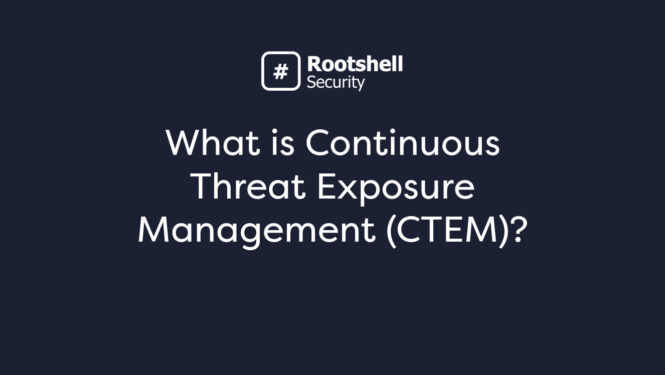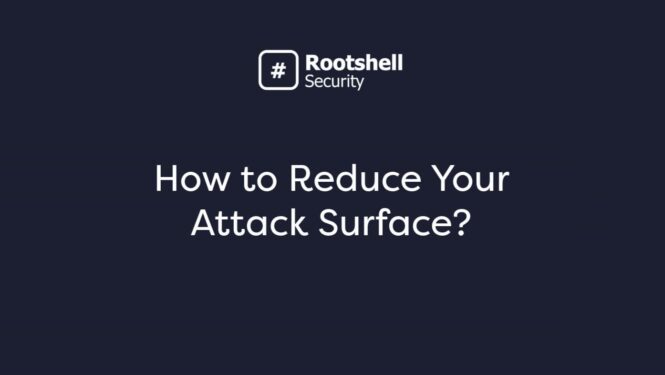A vulnerability scanning service is essential to any organization’s cyber security strategy. It enables IT security teams to identify security weaknesses within their networks on an automated, ongoing basis.
Vulnerability scanning can either be conducted internally or outsourced as a Vulnerability Scanning Service. Read on to find out the benefits of both, as well as how vulnerability management solutions like The Rootshell Platform can transform how teams handle and action their vulnerability data.
What is Vulnerability Scanning?
Vulnerability scanning is an automated process that uses software to continuously analyse different components of an organization’s network for security vulnerabilities, such as unpatched software, firewall misconfigurations, and many more.
Vulnerability scans are typically run weekly, monthly, or quarterly. Once a scan is complete, the scanner provides an exhaustive list of the vulnerabilities identified. It is then up to security teams to manage their results and determine which issues require remediation.
Vulnerability scanning is a critical part of any organization’s cyber security strategy, enabling IT security teams to identify and resolve security issues before they can be exploited by threat actors.

What is the Difference between Vulnerability Scanning and Penetration Testing?
Vulnerability scanning is not to be confused with penetration testing.
A penetration test involves a range of manual techniques to assess an organization’s networks, systems, and applications for security weaknesses. It is a short term, project-based engagement that is typically conducted once a year, or if significant changes have been made to an organization’s network.
Vulnerability scanning is an automated process that uses software to complete continuous vulnerability management. Vulnerability scanning can be conducted by in-house teams or outsourced as a managed service. Read our post on penetration testing vs vulnerability scanning.
What is a Vulnerability Scanning Service?
A Vulnerability Scanning Service, also known as Managed Vulnerability Scanning (MVS), delivers the end-to-end process of vulnerability scanning to organizations.
Vulnerability scanning services typically involve the following:
- Planning and scoping vulnerability scans
- Tuning and configuring scanning platforms
- Scheduling, executing, and managing the vulnerability scans
- Prioritizing and validating vulnerabilities
- Delivering reports and remediation guidance
In-House Vulnerability Scanning vs Vulnerability Scanning Services
In-house and outsourced vulnerability scanning services offer different benefits to IT security teams.
In-House Vulnerability Scanning
One of the main benefits of running vulnerability scans in-house is that internal teams will under their organization’s network in greater depth than an external provider. It will also provide teams with internal logs, helping them build expertise and knowledge internally by providing context on specific issues.
However, the onus is on in-house teams to properly configure scanning tools, as well as effectively and efficiently analyse their results. Scanning tools can potentially produce hundreds of irrelevant vulnerabilities, including false positive results, which could distract and slow down less experienced teams from resolving valid issues. However, it may not be worth the resource to train someone to the high standard needed to manage this.
Vulnerability Scanning Services
One of the biggest benefits of a Vulnerability Scanning Service is that the provider will manually review vulnerability data before it is delivered to clients.
This confirms the accuracy of reported vulnerabilities, reduces the number of false positives, and ultimately provides teams with a list of actionable issues instead of an exhaustive list of potentially irrelevant vulnerabilities.
Therefore, teams are equipped with better quality data, which leads to better decisions and outcomes for the organization.
Security teams can also benefit from their provider’s in-depth knowledge and experience. MVS providers are exposed to issues across a wide range of environments daily, so they can give the best context and advice to their clients, such as how a vulnerability might be taken advantage of by a threat actor.
Vulnerability Scanning providers will also have the best understanding of how scanners should be configured to give accurate and reliable results, saving internal teams the time and effort of learning new tools, managing licences, and tracking scanners. And the efficiency of providers means that results can be delivered fast, reducing the time between the detection and remediation of issues.
Additionally, vulnerability scanning services have access to a range of different tools, so they can select the best option for a given scope. Organizations may not be able to be as flexible due to scanner licensing terms.
How Can a Vulnerability Management System Help?
How Can a Vulnerability Management System Help?
A vulnerability management system could be a software, platform, or application that helps security teams implement effective vulnerability management.
Vulnerability management systems help security teams better manage their results from vulnerability assessments, from prioritizing, delegating, and reporting, to collaborating on remediation. The best vulnerability management tools support other threat assessments too, such as penetration tests.

Improve Vulnerability Management With The Rootshell Platform
The Rootshell Platform is a vendor-agnostic vulnerability management solution. It enables you to manage results from vulnerability scans, and other security assessments, such as penetration tests, in one central place.
The Rootshell Platform’s unique features help you accelerate every stage of the vulnerability management process and enhance efficiency from start to finish.
- Consolidate Your Scanning Data: Import results from any scanner into Rootshell, including the full Tenable suite, Qualys, and Outpost24. Rootshell can even automatically import results from completed scans for you.
- Integrate and Standardize Your Assessment Data: Generate a database for your scanning results in one consistent format. Analyse your vulnerability data alongside results from other assessments, such as penetration tests.
- Contextualize and Prioritize Your Assessment Data: Receive real-time alerts if exploits become available for your vulnerabilities, providing you with greater context and helping you prioritize most effectively.

- Streamline Your Remediation Workflow: Make remediation faster and more efficient, with third-party integrations, collaboration tools, real-time updates from testers, and more.
- Track and Validate Your Remediation Results: Measure your remediation efforts against your service level agreements and track key metrics, such as your monthly remediation rate.
- Visualize and Analyse Technical Risk Across the Whole Organization: Gain a holistic view of your global threat landscape; effortlessly analyse your technical risk with insightful dashboards and automated reporting.



